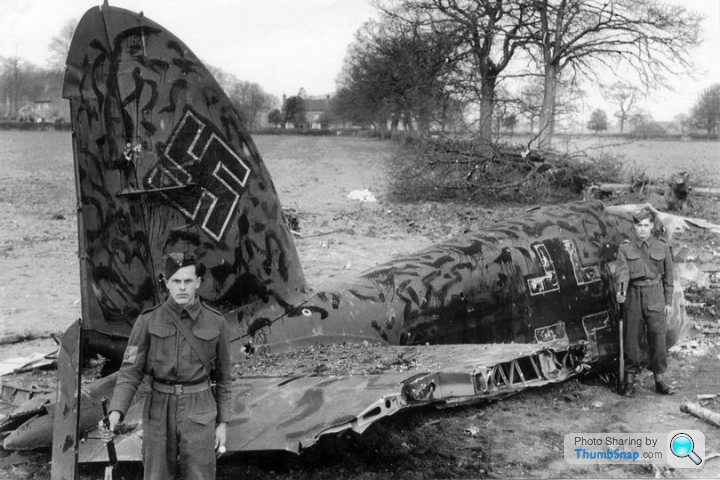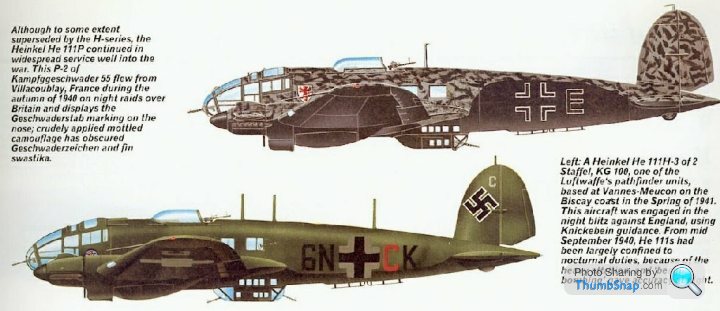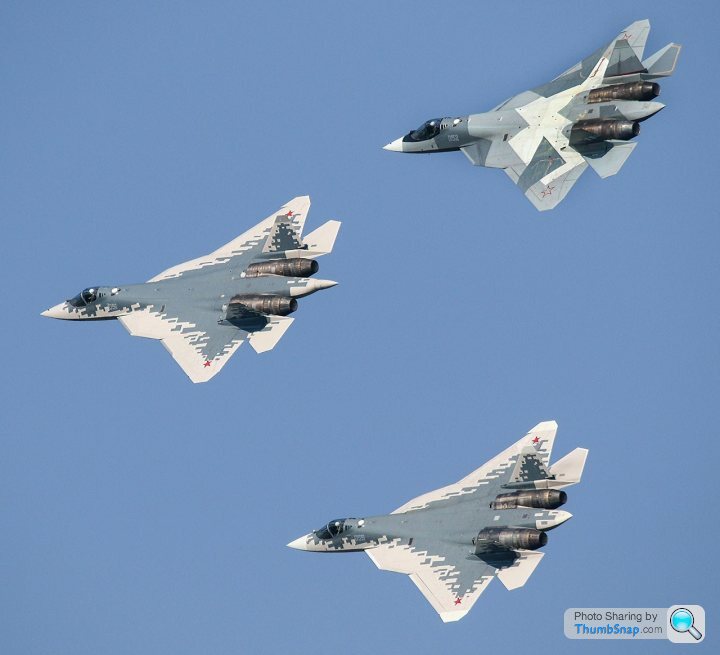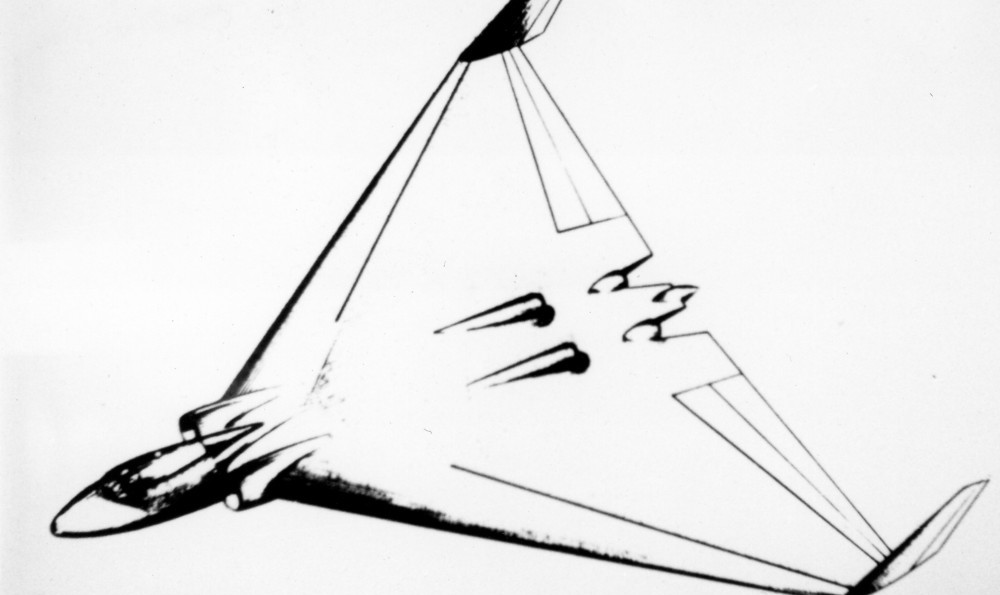Post amazingly cool pictures of aircraft (Volume 2)
Discussion
Ayahuasca said:
http://histomil.com/viewtopic.php?f=95&t=13357https://www.telegraph.co.uk/history/world-war-two/...
“The women who stole downed German airman's silk parachute..
The story of how a band of women confronted a downed German airman with pitchforks to steal his silk parachute to make knickers from has emerged after 71 years.”
Worth a read.
But looks like it’s just night cammo.
Ayahuasca said:
Hastily applied pre-crash, more likely. Because of the 'warbird' scene, most people have this idea that aeroplanes are neatly spry-painted in booths and all lines are straight, or nicely blended together. This is not so in service, where any bare-metal patches where paint has been rubbed/chipped off, or where airframe repair patches have been painted after damage is repaired, often fail to match the faded appearance of the rest of the 'plane.Google pictures of "D-Day" invasion stripes for an idea. You see a Spitfire with black/white wing stripes these days and it's masked beautifully so that all lines are dead straight. Not so when the ground crew were painting these stripes just prior to D-Day with rollers and brushes...

Edited by yellowjack on Sunday 3rd November 22:42
The interesting thing is that they are on the wings - not on the tail.
The point I was making is that designers have been trying to get rid of tail fins and tail planes for a very long time. The early designs for what became the Vulcan showed what they were trying to do. However, in those days (1948) you really could not have decent directional stability without some fins somewhere. Northrop tried it with their B-35 and B-49 and struggled. Nowadays, with computer controlled reactive systems, you can dispense with tail fins completely (as on the B2 and some remote vehicles) - just like birds have done since they evolved.
So, regarding the Sukhoi 57, they can get away with fairly small fins.
The point I was making is that designers have been trying to get rid of tail fins and tail planes for a very long time. The early designs for what became the Vulcan showed what they were trying to do. However, in those days (1948) you really could not have decent directional stability without some fins somewhere. Northrop tried it with their B-35 and B-49 and struggled. Nowadays, with computer controlled reactive systems, you can dispense with tail fins completely (as on the B2 and some remote vehicles) - just like birds have done since they evolved.
So, regarding the Sukhoi 57, they can get away with fairly small fins.
Eric Mc said:
The interesting thing is that they are on the wings - not on the tail.
The point I was making is that designers have been trying to get rid of tail fins and tail planes for a very long time. The early designs for what became the Vulcan showed what they were trying to do. However, in those days (1948) you really could not have decent directional stability without some fins somewhere. Northrop tried it with their B-35 and B-49 and struggled. Nowadays, with computer controlled reactive systems, you can dispense with tail fins completely (as on the B2 and some remote vehicles) - just like birds have done since they evolved.
So, regarding the Sukhoi 57, they can get away with fairly small fins.
The big difference between birds and aircraft that try to get away without vertical stabilisers is birds have an all moving tail and can have a vertical stabiliser when they need one.The point I was making is that designers have been trying to get rid of tail fins and tail planes for a very long time. The early designs for what became the Vulcan showed what they were trying to do. However, in those days (1948) you really could not have decent directional stability without some fins somewhere. Northrop tried it with their B-35 and B-49 and struggled. Nowadays, with computer controlled reactive systems, you can dispense with tail fins completely (as on the B2 and some remote vehicles) - just like birds have done since they evolved.
So, regarding the Sukhoi 57, they can get away with fairly small fins.
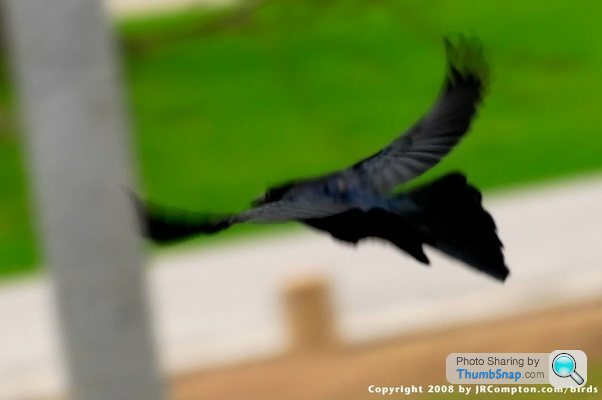
I guess Horten were the pioneers of tailless designs, I believe a lot of the early American designs were based on their work.
Re tailless rather than finless designs, one point a lot of people don't realise is in a conventional aircraft layout the horizontal tail fins are to produce downforce not lift. This makes for a nice stable aircraft (pitching up increases the wing lift but decrease the tail downforce so you pitch back down again), but this means you get induced drag. Tailess designs have less drag so were an attractive proposition before computers made unstable designs feasible.
Re tailless rather than finless designs, one point a lot of people don't realise is in a conventional aircraft layout the horizontal tail fins are to produce downforce not lift. This makes for a nice stable aircraft (pitching up increases the wing lift but decrease the tail downforce so you pitch back down again), but this means you get induced drag. Tailess designs have less drag so were an attractive proposition before computers made unstable designs feasible.
RizzoTheRat said:
I guess Horten were the pioneers of tailless designs, I believe a lot of the early American designs were based on their work.
Re tailless rather than finless designs, one point a lot of people don't realise is in a conventional aircraft layout the horizontal tail fins are to produce downforce not lift. This makes for a nice stable aircraft (pitching up increases the wing lift but decrease the tail downforce so you pitch back down again), but this means you get induced drag. Tailess designs have less drag so were an attractive proposition before computers made unstable designs feasible.
I would not say that the Hortens influenced early American tailless designs. Jack Northrop was working on his tailless concepts at much the same time as the Horten brothers - so they may have influenced each other if anything - assuming they were even aware of each other's work back in the mid to late 1930s.. The Hortens were really glider designers and were looking for a more efficient airframe form for gliding.Re tailless rather than finless designs, one point a lot of people don't realise is in a conventional aircraft layout the horizontal tail fins are to produce downforce not lift. This makes for a nice stable aircraft (pitching up increases the wing lift but decrease the tail downforce so you pitch back down again), but this means you get induced drag. Tailess designs have less drag so were an attractive proposition before computers made unstable designs feasible.
Some of the earliest tailless designs date back to pre World War 1.
This is the Dunne D8 from 1914. Dunne was actually Irish - so you could make a claim that the first workable tailless designs were invented by an Irishman.
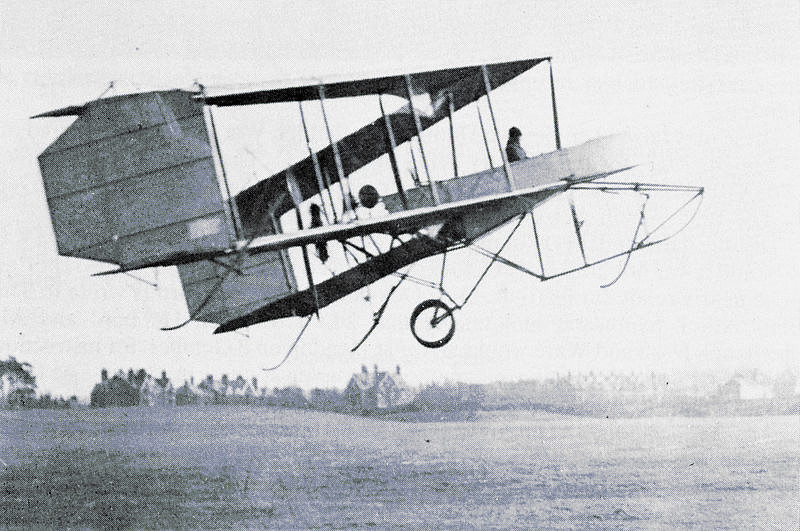
Gassing Station | Boats, Planes & Trains | Top of Page | What's New | My Stuff



